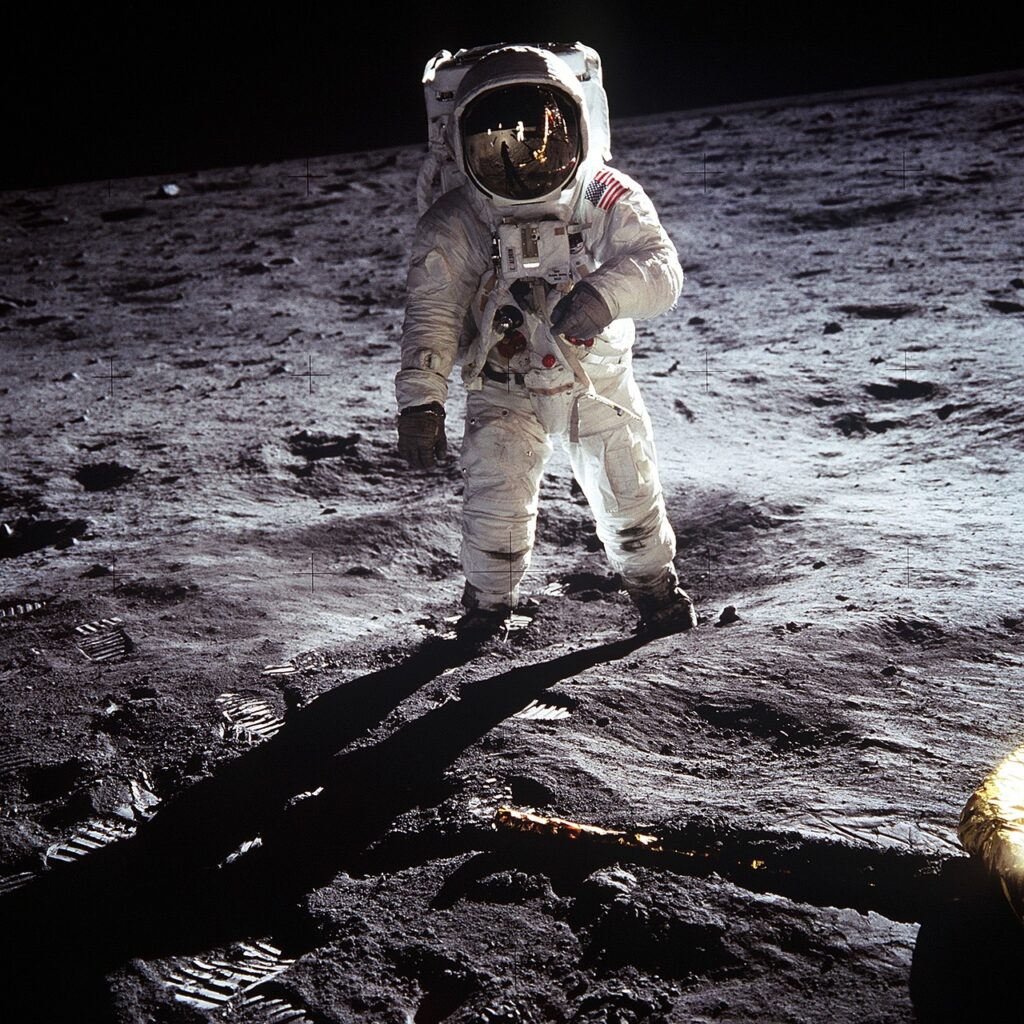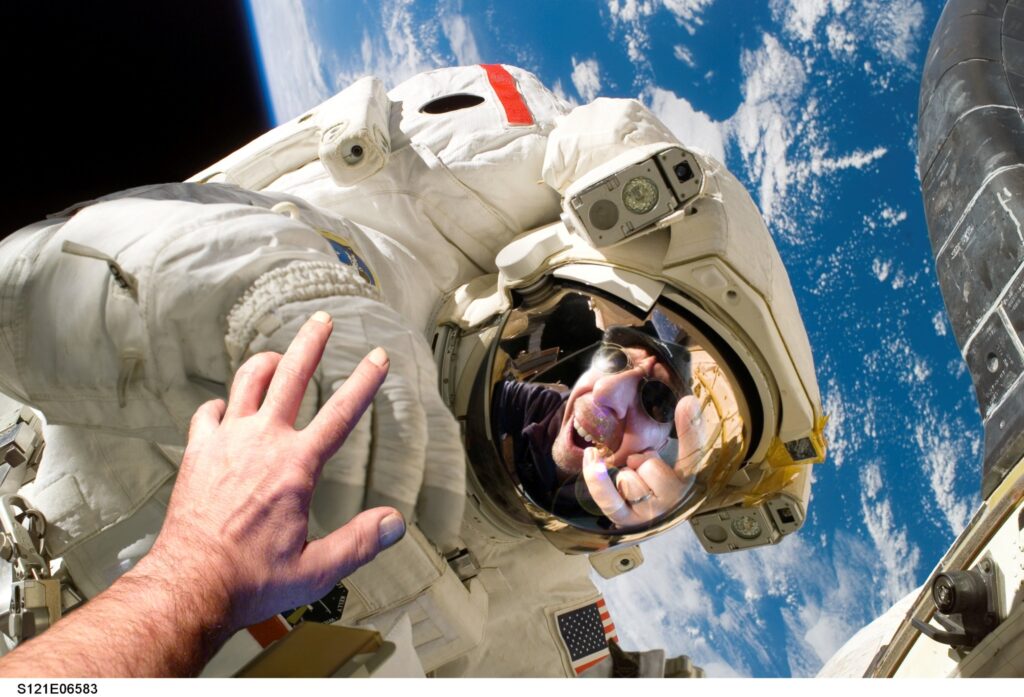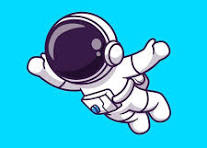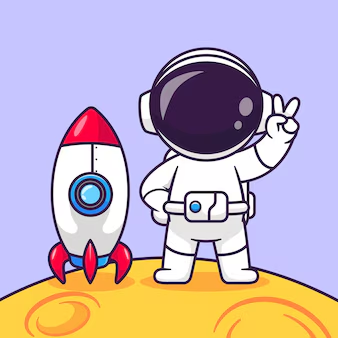What happens to the body when traveling to space?

Space travel is one of the most exciting and challenging adventures humanity has undertaken. As someone who has studied the effects of these journeys on the human body, I can share that space presents an extremely hostile and different environment from what we are used to on Earth. Microgravity, cosmic radiation, and prolonged isolation are just some of the factors that affect astronauts during their missions.
What happens to astronauts’ bodies when they go to space?
Microgravity has a significant impact on our bodies. In space, the body does not have to fight against gravity, resulting in the loss of muscle mass and bone density. Astronauts must exercise regularly to mitigate these effects, but even so, many return to Earth with weakened muscles and more fragile bones. Additionally, fluid distribution in the body changes, causing the face to swell and the legs to lose volume.
«Have you ever looked at the sky and wondered what secrets are hidden in space? How can we leave Earth? How far can we go? Let me tell you that you are not alone, because like you, thousands of human beings have wondered the same for years, but few of them have ventured into the wonderful outer space. Today we will talk about those brave individuals, the astronauts.
What happens to astronauts‘ muscles in space?
Without gravity to exert pressure on muscles, they begin to atrophy. The postural muscles, which we use to stand upright on Earth, weaken rapidly. Daily exercise on machines specifically designed for use on the International Space Station (ISS) is crucial to combat this problem. Despite these efforts, astronauts often return with considerable muscle mass loss, which can take months to fully recover.

What happens to your body in space?
Besides the effects on muscles and bones, the human body experiences other changes. Cosmic radiation is a constant concern, as it can damage DNA and increase the risk of cancer. Studies have shown that astronauts’ chromosomes can elongate due to prolonged exposure to space, although these changes tend to reverse after returning to Earth.
The immune system is also affected, becoming less effective in space. Wounds take longer to heal, and infections can be more severe. Exposure to a closed environment and a recycled air supply can increase susceptibility to respiratory infections.
But what is an astronaut? Astronauts are daring and trained engineers and scientists who have a special job: to travel to space. Although traveling would be very fun, it’s not actually their job. They leave the planet to conduct experiments, inspect Earth, or maintain the International Space Station. This place, the Space Station, is crucial for an astronaut’s life, as it’s like a gigantic house where astronauts from different countries live and work together as a great team. It is about 400 km above the Earth’s surface and orbits so fast that it circles the Earth 16 times a day.»
What is an astronaut’s salary?
An astronaut’s salary can vary significantly depending on the country and space agency they work for. At NASA, for example, astronaut salaries are usually based on the U.S. Government’s General Schedule (GS) pay scale. A novice astronaut can earn between $66,000 and $144,566 annually, depending on their experience and educational level. More experienced astronauts in leadership roles can earn more.
Drawings of astronauts
Drawings of astronauts are a fantastic tool for inspiring and educating new generations about space exploration. From detailed spacesuits to scenes of astronauts walking on the Moon, these drawings capture the imagination and show the reality of what it means to be a space explorer.



The first to reach the Moon were Russian astronauts
It is a common but inaccurate belief that the Russians were the first to reach the Moon. Although the Soviet Union achieved many firsts in the space race, such as the first satellite (Sputnik) and the first man in space (Yuri Gagarin), the first humans to land on the Moon were the American astronauts of Apollo 11 in 1969, Neil Armstrong and Buzz Aldrin.
«Imagine how many sunrises you can see as an astronaut. And although floating in the middle of space discovering the mysteries of the universe sounds fun, astronauts need to undergo a long and rigorous preparation process before they are ready to travel. This process includes things like studying space sciences and technology, medical evaluations, interviews, regular exercises, hours in flight simulators, among others. For example, they use giant pools that recreate the sensation of microgravity to get used to spacewalks. They spend hours in simulators that recreate situations like a landing or a launch. They also have survival training in case they land in a distant place with extreme conditions. They even learn languages to communicate with other astronauts on the space station.
Which country was the first to reach the Moon?
The United States was the first country to achieve a manned landing on the Moon. On July 20, 1969, Neil Armstrong and Buzz Aldrin, members of NASA’s Apollo 11 mission, became the first humans to walk on the lunar surface while Michael Collins orbited around the Moon in the command module.
And now you might wonder, after they are trained, how do they leave Earth? Because, as you realize, there is a force that keeps us glued to the ground.»
Requirements to be an astronaut
Becoming an astronaut is an arduous process that requires a combination of education, professional experience, and exceptional physical and mental conditions. The specific requirements can vary by space agency, but generally include:
- Education: An advanced degree in engineering, biological sciences, physical sciences, or mathematics.
- Professional Experience: A minimum of three years of related professional experience or at least 1,000 hours of pilot-in-command time in jet aircraft.
- Physical Conditions: Excellent physical and mental health, with rigorous medical examinations.
- Additional Skills: Ability to work in teams, solve problems under pressure, and experience in operations in extreme environments or under stressful conditions.
Frequently Asked Questions
Frequently Asked Questions
Astronauts' muscles weaken due to the lack of gravity. They need to exercise regularly to maintain their muscle mass.
Cosmic radiation can damage astronauts' DNA and increase the risk of cancer. It is one of the biggest concerns for prolonged space missions.
Microgravity causes a loss of bone density, which can lead to more fragile bones and a higher risk of fractures upon returning to Earth.
Recovery can vary, but it often takes several months for astronauts to fully regain the muscle mass and bone density lost during the mission.
Astronauts perform resistance exercises, cardiovascular workouts, and weightlifting with special equipment designed to work in microgravity.
Prolonged isolation, confinement, and separation from loved ones can affect astronauts' mental health. NASA and other space agencies provide psychological support to help manage these challenges.